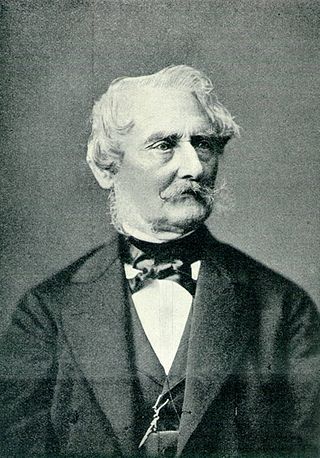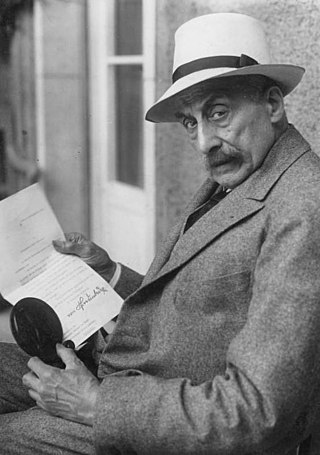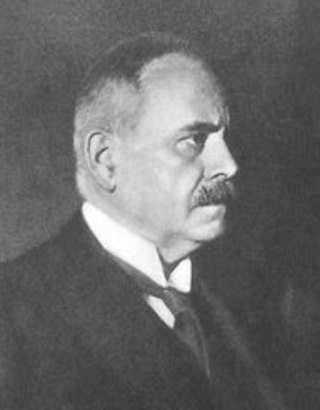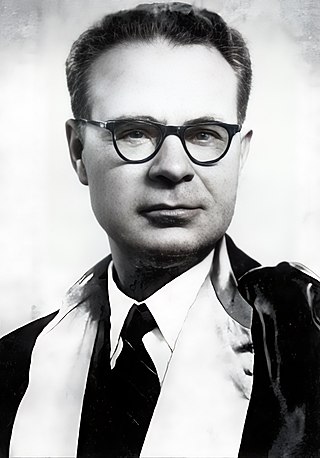Related Research Articles

Turkology is a complex of humanities sciences studying languages, history, literature, folklore, culture, and ethnology of people speaking Turkic languages and the Turkic peoples in chronological and comparative context. That includes ethnic groups from the Sakha, in eastern Siberia, to the Turks in the Balkans and the Gagauz, in Moldova.

Martin H[e]inrich Carl Lichtenstein was a German physician, explorer, botanist and zoologist. He explored parts of southern Africa and collected natural history specimens extensively and many new species were described from his collections by European scientists.

The Manichaean script is an abjad-based writing system rooted in the Semitic family of alphabets and associated with the spread of Manichaeism from southwest to central Asia and beyond, beginning in the third century CE. It bears a sibling relationship to early forms of the Pahlavi scripts, both systems having developed from the Imperial Aramaic alphabet, in which the Achaemenid court rendered its particular, official dialect of Aramaic. Unlike Pahlavi, the Manichaean script reveals influences from the Sogdian alphabet, which in turn descends from the Syriac branch of Aramaic. The Manichaean script is so named because Manichaean texts attribute its design to Mani himself. Middle Persian is written with this alphabet.

This is a list of members of the 4th Reichstag – the parliament of the Weimar Republic, whose members were elected in the 1928 federal election and served in office from 1928 until its dissolution in 1930.
Friedrich W. K. Müller was a German scholar of oriental cultures and languages. He is best remembered for his decipherment of manuscript fragments collected on the German Turfan expeditions to western China.

Johann Heinrich Strack was a German architect of the Schinkelschule. His notable works include the Berlin Victory Column.

The Adlerschild des Deutschen Reiches was an honorary award granted by the German president for scholarly or artistic achievements. It was introduced during the Weimar Republic, under President Friedrich Ebert and continued under Nazi Germany. It was a metal disc with a German imperial eagle on a pedestal. It was a high and infrequently awarded honor, received by around 70 people in total.

Wilhelm (William) Dittenberger was a German philologist in classical epigraphy.

Heinrich Lüders was a German Orientalist and Indologist known for his epigraphical analysis of the Sanskrit Turfan fragmentary manuscripts.
Annemarie von Gabain was a German scholar who dealt with Turkic studies, both as a linguist and as an art historian.

The German Turfan expeditions were four archeological expeditions to Turfan in Xinjiang, China, conducted between 1902 and 1914. They were initiated by Albert Grünwedel, a former director at the Ethnological Museum of Berlin, and organized by Albert von Le Coq. Theodor Bartus, who was a technical member of the museum staff and was in charge of extricating paintings found during the expeditions from cave walls and ruins, accompanied all four expeditions. Both expedition leaders, Grünwedel and Le Coq, returned to Berlin with thousands of paintings and other art objects, as well as more than 40,000 fragments of text. In 1902, the first research team financed largely by Friedrich Krupp, the arms manufacturer, left for Turfan and returned a year later with 46 crates full of treasures. Kaiser Wilhelm II was enthusiastic and helped finance the second expedition along with Krupp. The third was financed by means of the Ministry of Culture. The fourth expedition under Le Coq was dogged by many difficulties and was finally cut short by the outbreak of World War I in 1914.

Johannes Benzing was a German Turkic specialist and diplomat in the era of National Socialism and in the Federal Republic of Germany. Benzing worked as a Linguist in Pers Z S, the signals intelligence agency of the German Foreign Office. He was the youngest senior official (German:Beamter) and headed the section from October 1939 until September 1944.

Reşit Rahmeti Arat was a Turkish philologist, professor, writer and publisher of Tatar descent. He is considered to be the founder of philology in Turkey and a specialist of Old Uyghur language.

Große Berliner Kunstausstellung , abbreviated GroBeKa or GBK, was an annual art exhibition that existed from 1893 to 1969 with intermittent breaks. In 1917 and 1918, during World War I, it was not held in Berlin but in Düsseldorf. In 1919 and 1920, it operated under the name Kunstausstellung Berlin. From 1970 to 1995, the Freie Berliner Kunstausstellung was held annually in its place.
Shingqo Sheli Tutung or Šiŋko Šäli Tutuŋ, also known by his Chinese name Master Shengguang was an Uyghur scholar, translator and poet lived in 11th-12th centuries.
References
- 1 2 3 Zieme, P. (December 15, 1988). "BANG KAUP, JOHANN WILHELM MAX JULIUS". Encyclopaedia Irannica.
- 1 2 Karttunen, Dr. Klaus (2017). "BANG KAUP, Willy". whowaswho.
- ↑ Parentalia : Grundlagen zu einer Geschichte der Bangen. 1908.